Cooper Webb | Unplugged
Share
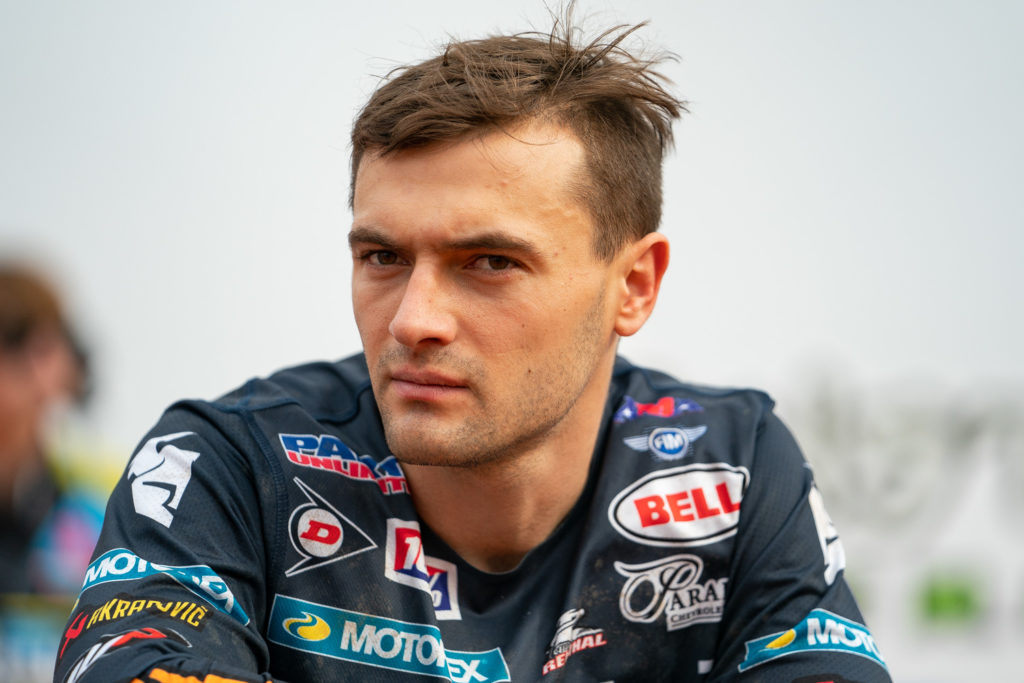
By Donn Maeda
Photos by Michael Antonovich & Donn Maeda
The return of Cooper Webb in 2019 is no surprise, really. The kid from North Carolina has always been a scrapper, one who hunkers down and rises to the occasion. On a 250, Webb was unbeatable in his last season in the division and it didn’t seem to matter where he started within the field… Webb was the cream that always rose to the top. Whether it was through talent, determination, or aggression, Webb was a winner and no one doubted his ability to parlay that success into the premier 450 division. But then the injuries and setbacks came. All told, Webb’s first two years in the 450 division were forgettable, but as he tells us in the exclusive interview that follows, they were important as they helped him learn more about himself and mature as an individual.
With four rounds left to go in the 2019 Monster Energy Supercross Championship, Cooper Webb finds himself in control of the championship points lead with six race wins to his credit. A fresh start with a new team, new trainer, and a new residence has allowed Webb to return to the place he belongs: the top of the sport. We took a deep dive with Red Bull KTM’s newest heavy hitter and he candidly opened up with things he’s never shared with the media before. It’s a big one, but this interview is worth the read. Enjoy!
This season has been nothing short of amazing for you; you have five wins and the championship points lead. It’s been a big turnaround and contrast from the last two years…
Yeah! I mean, shoot, it’s crazy how much of a turnaround this year has been. I’d say last year was probably my worst year ever with injuries, lack of results, and just overall frustration. A lot of stuff is new with my program this year, but to turn it around in such a short amount of time is incredible. I’m definitely grateful and blessed to be where I am at right now, and to have all of the backing from everyone who supports me is awesome. It’s pretty unbelievable when you sit back and look at the big picture.
Two years ago, when you made the jump to the 450 class, a lot of people including myself expected you to make the transition into the premier class much like Jeremy McGrath did; kicking ass and taking names. Did you share that sentiment?
You’re not crazy. I felt the same, especially after how great 2016 went for me. I won the 250 Supercross and the 250 National title, then I went to the MXGP and was able to beat Jeffrey Herlings and win there, too. Looking back at the Motocross of Nations, that was obviously it was a tough day for me, but I had a good ride there as well. Going into 2017, I knew I was capable of doing really well. At the MXGP in Charlotte, I had two laps to go in the second moto and while I was trying to pass Forkner, I got a rock to the hand and broke a bone in one of my fingers as a result. It wasn’t a big injury and I was still able to do what I needed to do. Following that, I went to race MXoN and made it a little worse in that tip-over I had. When I got home from Europe, I had to take about four weeks off to let that bone heal. In 2017, I actually didn’t start riding the motorcycle until November 1st. And yeah, the factory 450 was a lot different than what I was used to. I went straight to the Supercross track on the factory bike. I had a lot to work on when it came to my fitness and getting back into the flow of things. I think it was a combination of a few things, but I struggled to get comfortable right away on the bike and we were doing a lot of testing, but I just couldn’t get comfortable. The amount of testing we were doing just really took away from my motos and my training. It was crazy! To be honest, I went into Anaheim One on a setting that I wasn’t happy with. As a whole, it was just a struggle. Everybody was trying as much as they could and we were working well together, but I just wasn’t comfortable and lacked a lot of preparation. I was definitely thrown off hard though…it was a big change for me to see how deep and how hard the 450 class was. If you’re not firing on all cylinders, you get swallowed up quickly by all of the guys. It was a rough go, but I felt like I adapted quickly. At Anaheim Two I finished fourth and then went to Oakland and had a really great ride that landed me on the podium. I believe after that was Dallas, and I remember that race because of how frustrated I was. I got the first holeshot but then the red flag came out. On the restart, I came out second and felt like I had another podium coming, but then I got a flat tire about five laps in. And then I went into Minnesota the next weekend, got in a first turn crash, and popped my shoulder out. That was the early struggle. From there I tried to return to racing as soon as possible and looking back I should have taken the proper time off to let it heal, but I was trying to show how tough I was, I guess. It wasn’t working. I came back and couldn’t ride. I didn’t have enough strength to really ride anywhere close to my potential. My shoulder couldn’t last through a main event and it really never got better because I was just beating it. At that point I lost a lot of confidence, and that’s basically where my results came from in 2017.
“When I got on the 450 there was a big learning curve with the longer series, I had to be much stronger to deal with the longer main events and the longer season. I don’t think I realized how big of a jump that was. I feel like I never really pushed myself as much as I should’ve in the offseason. I realized that it wasn’t likely that I would win, so I just aimed to do the best I could. But I don’t work well that way. It’s hard to find motivation to go to a race with the goal of a top-eight or a top-five. I’m not wired that way.”
I think I had heard, maybe through your trainer Swannie that you were in a bad place. Was there a lack of motivation?
Yeah. For sure, I’m glad I can finally open up about it now and talk about it. There were a lot of things. Originally for me – and I don’t want to come across arrogant or anything – but I was so used to winning and in the 250 class winning was the norm. We worked really hard and accomplished a lot, so I knew every time I was on the track that I had the ability to win. When I got on the 450 there was a big learning curve with the longer series, I had to be much stronger to deal with the longer main events and the longer season. I don’t think I realized how big of a jump that was. I feel like I never really pushed myself as much as I should’ve in the offseason. I realized that it wasn’t likely that I would win, so I just aimed to do the best I could. But I don’t work well that way. It’s hard to find motivation to go to a race with the goal of a top-eight or a top-five. I’m not wired that way. I knew how uncomfortable I was on the bike and I knew of my lack in preparation, so it was like I was trying to trick myself and say, “Hey, you can go win.” But I knew I couldn’t. It was tough to find motivation when I knew at best, I was going to get a fifth. I was in a tough place, to be honest. I wasn’t clicking on the motorcycle and that was frustrating. To not be able to ride to my potential and be held back by something that was out of my control was tough. I have to applaud Yamaha, though, we tried from sun-up to sundown to get comfortable, it was just a struggle for me. Like I said, we finally got a little comfortable after a few rounds of Supercross, but then I popped my shoulder out. I think from there on out was just tough. Going into the 450 Nationals we did a lot of testing and then the week before Hangtown, they did the worst thing they could have ever done. They brought out the 2018 bike and let me ride it. It’s a true story. I went out there on a stock bike at the end of the day at Glen Helen and was going two seconds a lap faster than I could on my factory bike. On a bone-stock 2018 bike! This was the week before Hangtown, and then they told me I wouldn’t be able to race that bike until we were about four rounds in because of the homologation rules. I told myself I’d do the best I could on the 2017 for the first four rounds, and then hop on the 2018. I could see light at the end of the tunnel, I was like, “Man, things are about to come around!”
So, we ultimately stopped testing on the 2017 because the 2018 was going to be out soon, and I was excited. Well, somewhere along the way something happened where the new bike kept getting delayed. It got to the point – and this is no lie – that I sent my 2017 practice bike back to Yamaha because they told me I was racing the 2018 bike the next weekend, no matter what. I think this was before Unadilla, so I sent my bike back and then I get a call the Wednesday before the race saying, “Hey, we can’t ride the 2018 this year, so we’re sending your practice bike back.” I had been riding the bone-stock 2018 bike for two weeks and I loved it, and I didn’t want to touch the ‘17. It was just a frustrating time. I know the Yamaha US guys didn’t know because this was coming from Japan, but if I had I known that I wouldn’t have been able to race the 2018, I would’ve been out in California getting the 2017 dialed. I kept being told that I was racing it next weekend, the next weekend, and it never got to that point. It was just a frustrating year, really. And then I was told that because of Monster Energy I had to go race the United States MXGP. I went on a stock 2018 bike and I was happy with that. The bike had just come out, so we didn’t have any parts for it yet. I rode it with stock suspension because I really enjoyed it, and an aftermarket exhaust. I went out and crashed like the third lap of practice and ended up tearing a ligament in my thumb. That required surgery and like that, it was another three-month process to get healed.
So, behind the eight ball again for the 2018 season…
Exactly.
What was your biggest struggle with the 2017 YZ450F? Was it cornering and front-end feel? At a production level that was what most people struggled with. Tall guys seemed to adapt ok, but you’re not the tallest dude…
Yeah, for sure. It’s hard for me to really pinpoint one thing, and the guys were really awesome over at Yamaha. They were willing to do whatever it took, and I was thankful for that, I think people just gel with certain bikes and others just don’t. Like you said, tall guys versus the shorter guys; I look at JGR a few years ago when it was Millsaps and Stewart; Davi rode the bike amazingly well and Stewart couldn’t stay off the ground on it. I think certain guys can ride bikes and certain guys struggle on bikes. People go back and say how well I rode the bike at the Motocross of Nations, and for whatever reason, I always enjoyed that bike in the stock form. I don’t know why, but it’s true. I was on a Star Racing YZ450F with their suspension settings and that was basically it because there were no parts available. I also think at that time I was also so confident that I didn’t matter. I had my struggles with it, but I just made it work for that one race.
That was when you were in full Scrapper mode…
Yeah (laughs). The Scrapper was there.
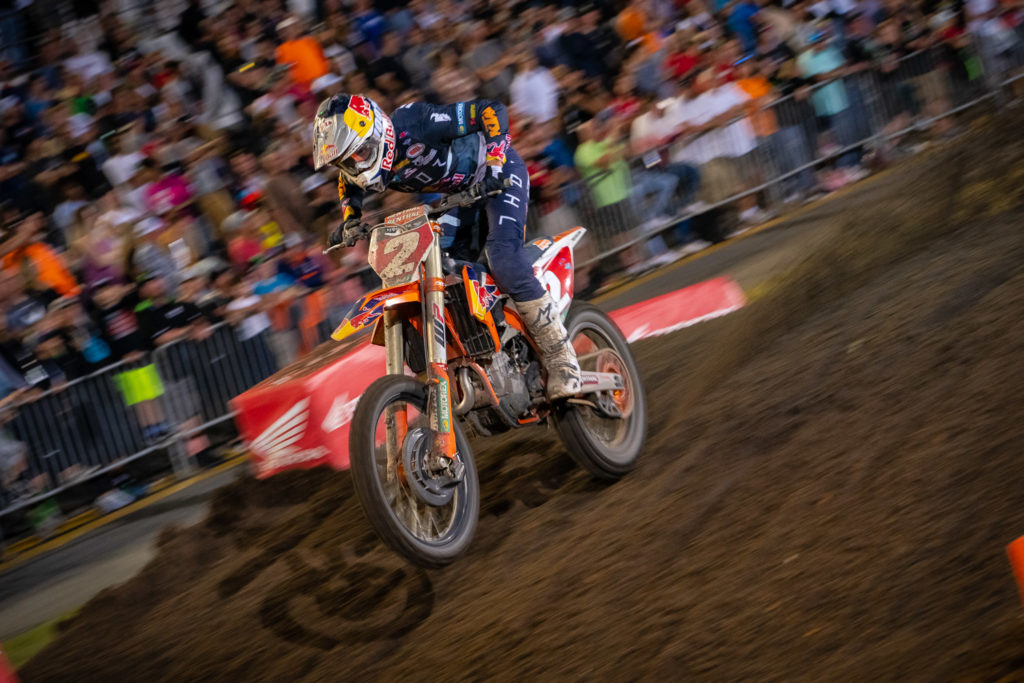 “I look back and realize that I never want to feel like that again, but in the long run, I think it was the best thing that could’ve happened to me. It opened my eyes to a lot of difficulties that I hadn’t yet experienced. It made me more motivated than ever.”
“I look back and realize that I never want to feel like that again, but in the long run, I think it was the best thing that could’ve happened to me. It opened my eyes to a lot of difficulties that I hadn’t yet experienced. It made me more motivated than ever.”
I remember we were hanging out at the Thor intro and you were telling me how much you loved the 2018 bike in stock condition. I know factories are sometimes obligated to run certain parts, and sometimes the bigger forks and more-rigid front end aren’t ideal for the rider. How did you feel on the factory bike in 2018? Was it good for you or was it another struggle?
It was different, for sure. I guess the point of this interview is to get some stuff out, but like I said, I needed surgery after I got hurt at the US MXGP. The ligament was completely torn off, and without that ligament you can’t move your thumb. So, I got surgery immediately and I was in a cast for 12 weeks. I took my time off, went to California, and worked with Swannie as much as I could. I couldn’t ride a bicycle because of the cast, but we did everything we could. We were in the gym, running a lot, and doing anything we could. I didn’t get on the bike until the week of Thanksgiving and that week is a crazy week for the team. I rode a week of motocross, just to get movement in my hand, then rode Supercross the next week and everything was going well. During my second week on the bike I got on a Supercross track and I was actually happy with the bike. But everything about it was stock except suspension. I felt really comfortable on it. The third week of riding everything was going well for the most part. Then at the end of one of the days, they wanted me to get on the factory bike they had built. So, I hopped on it, crashed, and sprained my ankle. And that was the second week of December, so I was basically freaking out because I was so underprepared it wasn’t even funny. There is only so much you can do with a sprained ankle, so once again I took two weeks off of the bike and I couldn’t train because I couldn’t even use my foot. We were doing as much as I could, but nothing that was really what we needed. Fast forward two weeks, I hopped back on the bike on the week of Christmas, which is a tough time period with the holidays. Yamaha gave me a bike, I flew my practice guy out and we were basically riding all the way through Christmas, through New Year’s, and up until Anaheim One. Going into the season, I had four weeks of riding total and basically zero test days, so once again I found myself trying to trick myself into believing I was ready. I knew damn well, though, that I wasn’t even close. It was tough to do that again, and I think I was actually a whole lot less prepared in 2018 than I had been the year before!
It took a while, but I think I got better every weekend. By Dallas, I think I was in the top five. I ended up going to North Carolina and I think it was good for me to get away from California and just try and focus on myself for a bit. At Tampa I finished fourth and then in Atlanta I crashed in the first one triple crown race, but then got a second and a third in the next two. At Daytona I got on the podium, and things were actually going really well. I felt good on the bike and I liked it, and I felt that everything was coming around. I feel like after being on the podium in Daytona, something clicked for me and I was really, really happy. Then on the following Tuesday, I had a faulty chain that snapped on me over a dragon back during my last lap of a 20-minute moto and popped my shoulder out again. That really took the life out of me again, but I knew how well I was feeling so I decided to try and take a week off and then return to racing at St. Louis. Really, once again I shouldn’t have raced, but at that point I wasn’t mentally strong enough to just tell myself I could do it. I went out and crashed in practice. I shouldn’t have been out there. After that we had a weekend off so that helped, but then we went to Indy and I crashed in the first turn and got back up to seventh. Then we went to Seattle and I got fifth in the mud. Then in Minneapolis for the Triple Crown and in the first race of the night someone crossed jumped in the rhythm after the start and I got landed on. I ended up breaking my leg and that was that. It was tough. I broke my leg in four different spots, so it was a pretty big deal. I had surgery right away, but that definitely took a lot out of me. Having a big surgery like that is hard to put in the past when you get back on the bike.
For whatever reason, we decided that I really wanted to go race. So, after having the initial surgery we had to get another surgery to get a couple screws out, and that it took about six to eight weeks. I had only been walking for one week – and when I say walk it was more like a limp – and I remember getting on the dirt bike five days after being released to walk and expecting things to be fine. I raced three weeks later at Southwick, which is probably the toughest track that I could’ve chosen to come back at with two weeks of riding and three weeks of walking under my belt. I really shouldn’t have been out there, but I felt like I owed it to Yamaha to be out there. I told myself just to get out there, even if I just got a top-10, and finish out the season. I thought by maybe the last three race I’d be healthy enough to show what I had. It was tough, though. My leg wasn’t right during those last ones, I hadn’t taken enough time off to let it heal and get my flexibility back. Every time I rode, I felt like I made it worse.
When you’re a racer all you want to do is be out there racing. Looking back, it was a tough two years but there was a lot of stuff that went on that people don’t know about. During the time you don’t want to bring up the negatives, you just try to deal with it. There was nothing for me to build confidence off of. I had never really been hurt through my career, but I had crashed and gotten hurt so many times in ’17 and ‘18. I had two of my first surgeries in 2017 and 2018. So yeah, I think Swannie was right, it was a dark time for me and it was just tough. I look back and realize that I never want to feel like that again, but in the long run I think it was the best thing that could’ve happened to me. It opened my eyes to a lot of difficulties that I hadn’t yet experienced. It made me more motivated than ever.
You know that saying; the tough times help you appreciate the good times even more…
Absolutely! And not even just for my racing, but for my character, too. It was a huge experience and it brought me back to reality; it forced me to grow up and it opened my eyes to change. Looking into the future, I tell a lot of people that I really think if I hadn’t had those tough years, I wouldn’t have made the change I did with going to KTM and changing everything about my program. Who knows, maybe I would’ve had the same results on the Yamaha this year. I personally don’t know. It’s hard to sit there and say what would’ve happened. But I do know that the changes that I made were a thousand-percent worth it.
You mentioned changing your character. In spite of all the winning you did on a 250, you never came across cocky to me. I always thought you were confident, and there is a difference.
Like I said, it is tough because I do have a lot of self-confidence, but one thing I had to learn was that you can’t please everyone. You’re going to have fans and you’re going to have guys that don’t like you. I’m only 23, but when I was younger, I was definitely chippy…
“I knew that at one point I had beat Herlings and ran with him, and then for him to turn into the greatest motocross racer in the world, I knew in myself that I didn’t lose that. It’s still there. As crazy as this sounds, he was my motivation through a lot of it.”
Yeah, but I still don’t feel like you were ever cocky. You were just self-confident.
Yeah, for sure. And I had such strong confidence in myself that at that level I would do anything I could to get under someone’s skin. I remember at the MXGP at Charlotte, Jeffrey Herlings beat me straight up that first moto, but I knew if I could get him off his mental game that I could beat him in the second race. So, on the line I looked over and said, “I hope you’re ready for this 30-plus-two because it’s going to be a battle.” I saw it in his face, he just couldn’t believe it (laughs). I knew then and there that I had flustered him. Obviously, it was a great race for me. As funny as it is, I looked at that race and I never forgot that race the whole time I was hurt and not feeling like myself. I knew that at one point I had beat Herlings and ran with him, and then for him to turn into the greatest motocross racer in the world, I knew in myself that I didn’t lose that. It’s still there. As crazy as this sounds, he was my motivation through a lot of it. I’d see how great he was doing and tell myself that I could at least come close to that. That guy is the bar and at one point I was competitive with him, so I felt I could get there or at least get close. He is the bar, for me. We both moved up at 17, he had injuries and then turned it around and dominated. I truly believe he is the best guy in the world on a motocross track right now.
The switch to KTM was a really poorly kept secret. How did you decide to go there and make a complete switch in your program?
Well, I was actually in a pretty unique situation because I had signed my 2017 450 deal with Yamaha before I even lined up on the starting gate in 2016. Coming into that year, I did have a lot of offers and KTM was actually very interested. They gave me a good deal and at the time they had Ryan Dungey and Marvin Musquin and were going to have me as their third guy. However, at the time I just didn’t want to make that change. I had been with Yamaha for so long and they were doing a lot to bring their team back, the addition of Monster, not to mention Chad Reed was going to be my teammate and mentor. Looking back, I still would have taken the Yamaha deal because it was just a great all-around deal for everyone. KTM understood why I stayed with Yamaha, but they still had interest. They told me, “When your next contract is up, we will be ready.” After the years I had, I thought there was no way in heck that they would still be interested. I remember getting a call the week after I broke my leg from Roger DeCoster and he said, “We want you for next year, get healed up.” It caught me so off guard it wasn’t even funny. I just remember right then and there that my mind was made up. For a guy like that, of his stature, to call me at a time where I was in a pretty low spot being injured again, it was just such a mind-blowing thing at the time. I knew right then and there where I would be going, but obviously with contract stuff and obligations, I didn’t want to upset anyone. I couldn’t negotiate until late June, and to be honest I wanted to go to KTM, but at the same time I still felt like I owed Yamaha, so I wasn’t completely set on leaving. I went to Yamaha and told them I wanted to ride with them again and put the last two years in the past, and they said they’d get back to me. Basically, I got offered a one-year deal for a lot less money, no Monster contract, nothing. I was still grateful for it because it was an offer, but I felt like a one-year deal was not what I wanted. I wasn’t that stoked on it to be honest, but I couldn’t negotiate with any other team until June. Yamaha kept asking when I was going to sign, and I kept telling them I wanted to hear from other people. I was honoring them and letting that date stand, but they actually let me negotiate earlier than I was supposed to. I think their attitude was that they didn’t think I was going to get any other offers from anyone.
I told KTM that I could negotiate, and they had me an offer within the hour! And it was a long-term contract for more money, and you could see the interest they had. The genuine belief they had in me in the beginning was crazy. I went back to Yamaha and showed them the offer because I felt like I at least deserved a two-year deal. The money is one thing, but I felt like I deserved that. They came back and said if I won a championship in 2019 that they would re-sign me for 2020, but for the same amount of money. I was shocked.
It’s crazy to hear about all the behind-the-scenes issues you had – the injuries and bike discomfort – two things completely out of your control. Yet, the talent and drive as a racer that you have doesn’t go away.
I don’t think that actually hit me about the bike…until I sat on the KTM.
Okay, tell me, what were your first thoughts about the KTM when you first rode it?
It was pretty sweet. I rode outdoors on the first day, and within three laps I felt like a new man. I felt in three laps better than I had for years. No joke, I did a lap to roll around, hit the jumps on the second, and the third lap it was like the bike was built for me (laughs). I knew right then and there that I had made the right decision and that I could get back to where I wanted to be. It was really, really exciting. You go through the pros and cons of the decision and you feel like it’s the right choice, but you still have doubt. And all of the doubts I had were gone by that third lap.
Was there anything about the contract that you felt iffy about?
That was a little bit of a tough thing for me because I was really happy with what I had. I wasn’t a huge California guy, but it was okay because we did it right. I felt at the time that I was happy and that everything was going well. KTM did push the Aldon thing and at first, I was nervous. You see all the results that he gets, but it was still a pretty big change. I had a house in North Carolina and a house in California, but I needed to sell all that stuff and move out to Florida to ride and train. I basically had to get rid of everything I had and start over with a guy that I had never met, and I was also going into territory that I knew I was more than likely not going to be welcomed into. I knew I was going to struggle to adapt to the training, riders, and everything. It was tough, but when Roger called me, I told myself that I would do whatever he said if the KTM deal happened. I did question it, but they told me what they wanted, and I said okay. I told them I couldn’t guarantee that it would work out, but I would go into it with an open mind and give it my all. Everything on the contract was amazing, really. Red Bull stepped in and supported me, the salary was really fair, and the two-year deal with the third-year option was perfect. I couldn’t have asked for anything else, especially with the results I had to be honest.
I heard a story where you came out to Florida and instantly you set a new track record, which made Marvin step it up. How was the blending in with the team? Was there any friction or was it easy?
I think I had to be practical, I guess you could say. I knew Marvin didn’t like me from how I raced him in the past and how aggressive I was, but I also knew that we had never really been around each other outside of a racing situation. And that’s with anyone; if you have issues with a rider it’s more than likely race afflicted, step away from the race track and you could probably be best friends with that guy. We tend to hold onto whatever happened at whatever race and that’s how we judge a person. So, right way on the first day, I went over to him and apologized for everything in the past, which was tough to do, but I said, “I’m here to be a great teammate, I have a lot of respect for you, I’m not at your level right now but I’m here to learn.” I told him I didn’t want to get in his way or frustrate him, I just wanted to learn and do what I was told. I said I hoped we could become friends and actually be great teammates. I definitely think I caught him off guard, but that was a really good ground rule that I set. From there, it’s been really great. The offseason was a really tough transition for me, it was hard to come in and be competitive with those guys, but I also I just explained to Marvin that this is his team. He’s been on KTM for 10 years, and I’m not here to try and take that spot from him. If I’m on a great bike with a great group of guys around me, it doesn’t matter who the A and B guy is. I think a lot of people put that as a big target, but there is no A and B guy. We are dealing with the same people, same equipment and everything.
So, the team is very fair and you guys are treated the same. You guys are getting along okay?
Yeah, we were able to bridge that gap. And like I said, I will actually continue to learn a lot from him. He’s so talented and he’s a championship contender each year, so for me to be able to learn from him is huge. Even now, we push each other daily, so both of us overall have stepped up our game.
I think you going up to him at first and saying those words was very mature. I guess it probably did catch him off guard, huh?
Yeah, for sure. That’s the stuff that I feel like I’ve gotten much better at when compared to my 250 days. I’ve learned to swallow my pride and put things in perspective. Aldon is huge on attitude, and he was the first guy to put me in my place. He basically said that this was how it was going to be and that I was at the bottom of the totem pole. He said to show respect and that it was over the second I wanted to act foolish, so he helped a lot. My mechanic Carlos really helped with putting things in perspective. I mean the whole team is just such a knowledgeable group of guys.
“If I’m on a great bike with a great group of guys around me, it doesn’t matter who the A and B guy is. I think a lot of people put that as a big target, but there is no A and B guy. We are dealing with the same people, same equipment and everything.”
Two years without a win, two years filled with injuries, and two years with some lack of confidence. How good did that first win feel on the KTM?
It was incredible, man. And especially because I did it as early as I did. I said it in a few interviews that I did, but really my goal this entire year was to actually win a race. And that was my goal in all 17 rounds, so for that to of happened at round three and after the first two races was pretty crazy. Just to knock that off of the list and to show myself that I can win again was pretty unbelievable. I can’t even really put it into words to explain what it meant.
Was it an opening of the flood gates? Was your confidence through the roof following that first win?
For sure. As soon as I got that one podium, I knew my confidence would be sky high. Even at Anaheim One, it was muddy, but it was such a great ride and that track gave me a lot of confidence. We joked about it and said that it would be the difference maker whenever I got that first win. I was pretty confident, but I feel like until you physically do it, it’s hard to imagine what it is like and then once you do it you know what it takes. That was a huge confidence gainer and it really got the ball rolling towards my next step.
Win one was followed by win two, three, four, and five. How different are you mentally than before round one?
(Laughs) I still can’t believe it to be honest. In the press conferences each week I get asked if I expected this, and the truth is I really didn’t. Believe it or not, I don’t think I’m too crazy with my mindset. That first win helped me get my belief up a little bit, but I’m still going at it with the same mindset and attitude. Every race I do is another race with the team, every week with Aldon completes another building block of fitness. I’m still learning the bike and we are still making improvements on it. I’m still learning how to race competitively each weekend, and I still feel like there are a lot of areas where I can be better. For me, it’s exciting because I can just focus on myself and know that I’m surrounded by a great group of guys each week. It’s definitely pretty crazy, but overall, I’m at a better place mentally but not as much as you would think.
There are still a few rounds left in the season and anything can happen, but have you started to think about the title yet?
Yeah, it’s hard not to for sure. Like a said, I think it’s good for me because I’ve been in this situation and I know what it’s like. It’s really up to me to make it whatever I want to make it. I know it sounds crazy, but I’ve already achieved far beyond what I wanted to achieve this year. I don’t know what the limit is, I’m just taking it week by week and doing the best I can each weekend. The group of people I have around me is super solid and they help me improve daily. It’s hard not to think about, but there are still places where I need to be better and that’s what I think about more.
“I know it sounds crazy, but I’ve already achieved far beyond what I wanted to achieve this year. I don’t know what the limit is, I’m just taking it week by week and doing the best I can each weekend.”
Thinking about the motorcycle a little bit, what is the aspect you love about it the most?
For me, I’d say just the weight of it. How light and nimble it is, but the engine makes it so easy to ride too. Really everything, it fits my body type really well. The biggest thing is just how light and nimble it is.
Was it odd to get on a steel frame for the first time in your big-bike career?
No, not really. A lot of people told me about it, but I actually didn’t notice too much of a difference. The first day I hopped on it, I could feel a little different vibration here and there, but overall no. Once I rode it for a day or two, I was pretty much used to it.
I was thinking about it the other day, do you remember coming up to me at Milestone when you were still riding a 150 and giving me a DVD that said, “Cooper Webb Number 175” on it? Was that your mom and dad telling you to give me that DVD?
Yeah, it was (laughs). I think we did a video for TransWorld MX shortly after that, I do remember that.
It really makes me feel like an old man. I remember you on a mini and now you’re winning 450 Supercross races and hopefully on your way to a title.
Yeah, hopefully. We will see. It is cool to look back and think how far I’ve come from the days of being a little kid and trying to make it.
Best of luck, Scrapper.
Thanks, man. I was shocked when I heard about what happened with TransWorld Motocross, but I am excited about what you guys will do with the new Swapmoto Live!
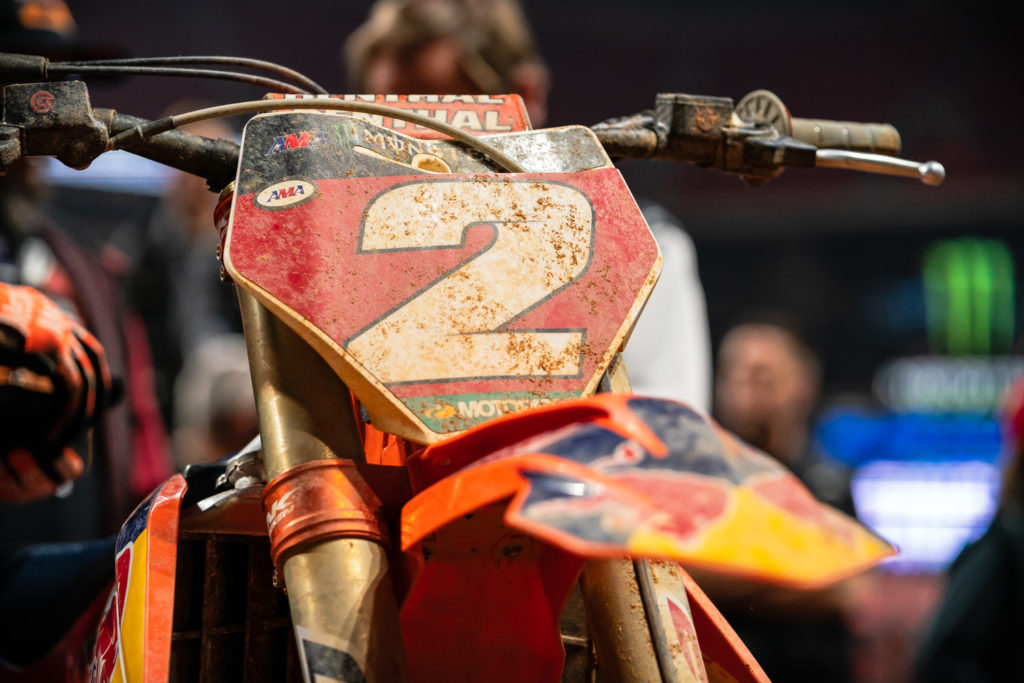
You Might also Like










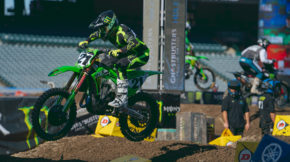
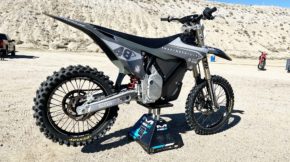
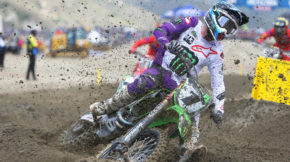
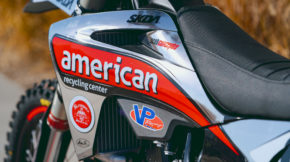
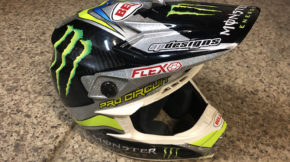
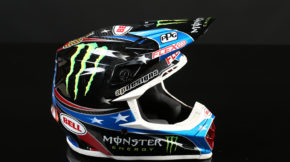
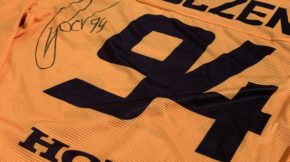
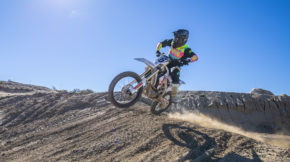
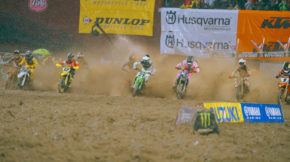
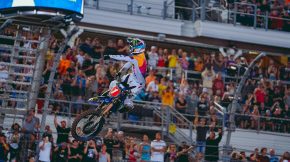
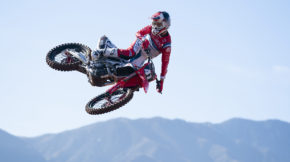
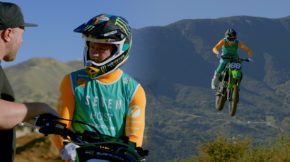
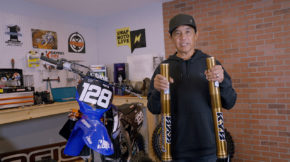
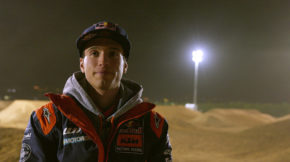
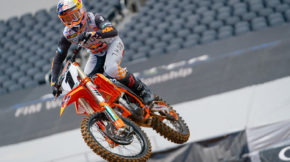
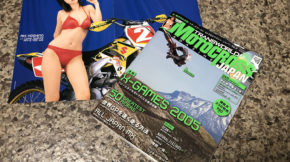
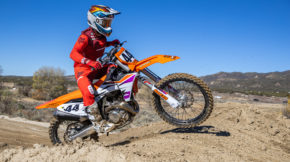
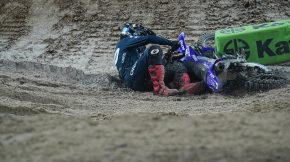
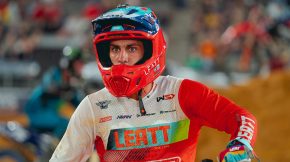
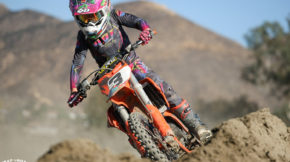
Great interview! Waiting for more of same.
Great interview.
2 Main Takeaways,..1, The KTM really is almost another class ( I have always liked Japanese Bikes, rather than Austrian )
2.,What a battle to get back to the front of the pack,.I hope to see him do well this summer and MXdN.